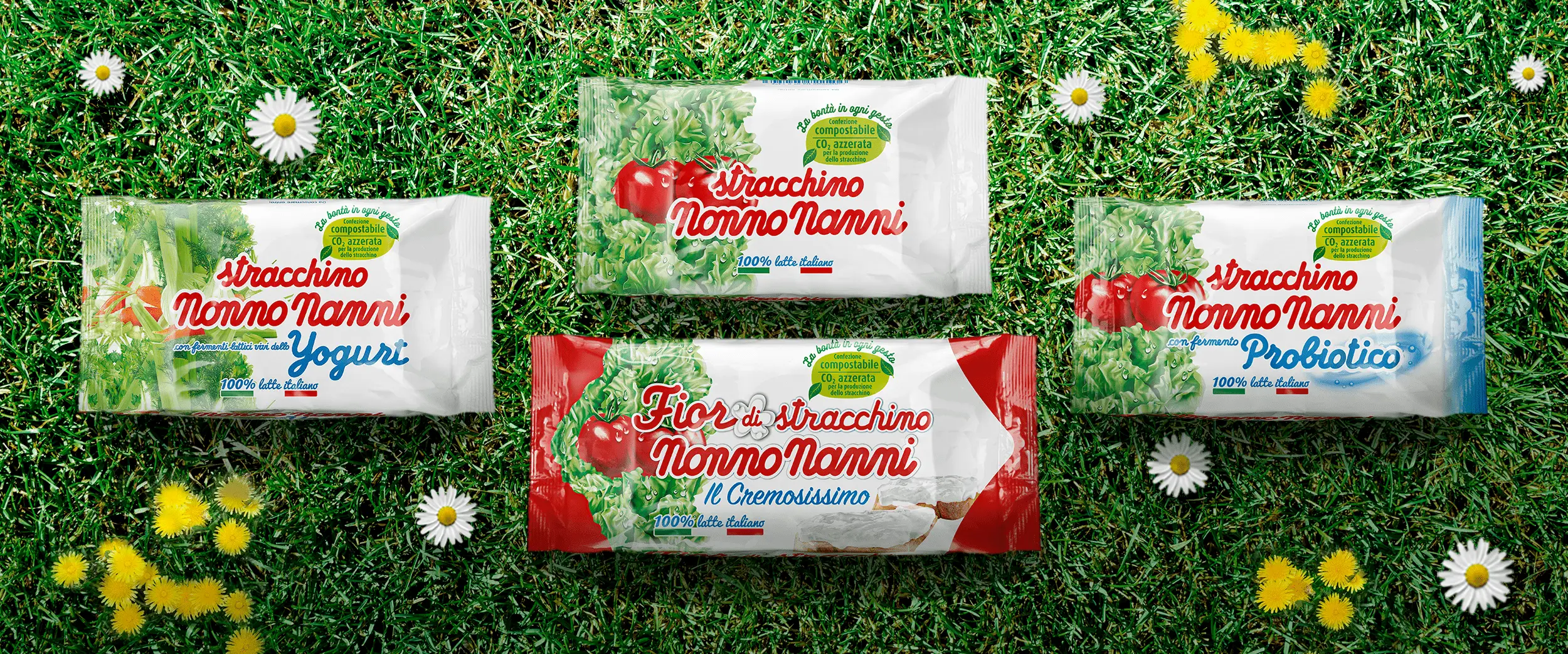



Traditional goodness in a new environmentally friendly pack.
Now Nonno Nanni Stracchino 100 g, Stracchino with Yogurt live lactic culture 100 g, Stracchino with Probiotic culture 100 g and Fior di Stracchino have 100% biodegradable and compostable packaging.
All the packaging materials have been designed to maintain the product’s organoleptic properties, to preserve its goodness and unmistakeable creaminess.

The materials have been designed to maintain the goodness and unmistakeable creaminess of the product.
Once the product is finished, simply throw the containers in the biowaste bin, as directed by local municipality rules.
Both the outer packaging and inner tray are made of 100% biodegradable and compostable material.
Source
The new packs are made mostly out of agricultural by-products and other renewable resources.
Feature
The flavour, freshness and genuineness of the product are preserved.
Recycling
You can throw the pack in the biowaste bin along with organic waste as directed by local municipality rules.
Rebirth
When the material is processed in a composting plant, it turns into compost to fertilise soil.
When a compostable material is thrown in the biowaste bin and goes through an industrial composting process, within 3 months it becomes compost that can be used to fertilise soil. Compostability means “the ability of a material to turn into compost via the composting process”. The resulting material (which takes its name from compost) can be used as fertiliser.
A material must comply with strict environmental protection regulations in order to be defined compostable and therefore be turned into soil fertiliser.
In particular, specific tests must be carried out in certified laboratories as set out in the European UNI EN 13432 compostability standard, which foresee*:
Material characteristics are defined by component materials, possible presence of harmful substances and quantity of components (e.g. organic carbon) essential for subsequent phases of biodegrading and disintegration.
Establishes material’s capacity to be converted into water and carbon dioxide.
Establishes material’s actual capacity to break down into tiny pieces, smaller than 2mm, in composting phase.
Verifies capacity of compost obtained with tested material to germinate seeds of various plant species: onion, corn, rapeseed, cucumber and others according to OECD guideline 208. In addition, barley must also be considered according to UNI EN 13432 standard. (*As in appendices A.1, A.2, A.3, A.4).

With the introduction of the new packs, we are the first stracchino makers to produce a pack created with 100% biodegradable and compostable material.
Years of research and constant effort have led to our environmental choice, another addition to our many existing sustainability initiatives.

The new packs are compostable in compliance with standard UNI EN 13432:2002. DIN CERTCO-certified packaging must be recycled in the biowaste collection.
Packaging must then be sent to composting plants as directed by local municipality instructions.
The flowpack and tray are both certified COMPOSTABLE.
The materials used for the flowpack and tray are entirely made of agricultural by-products and other renewable resources.